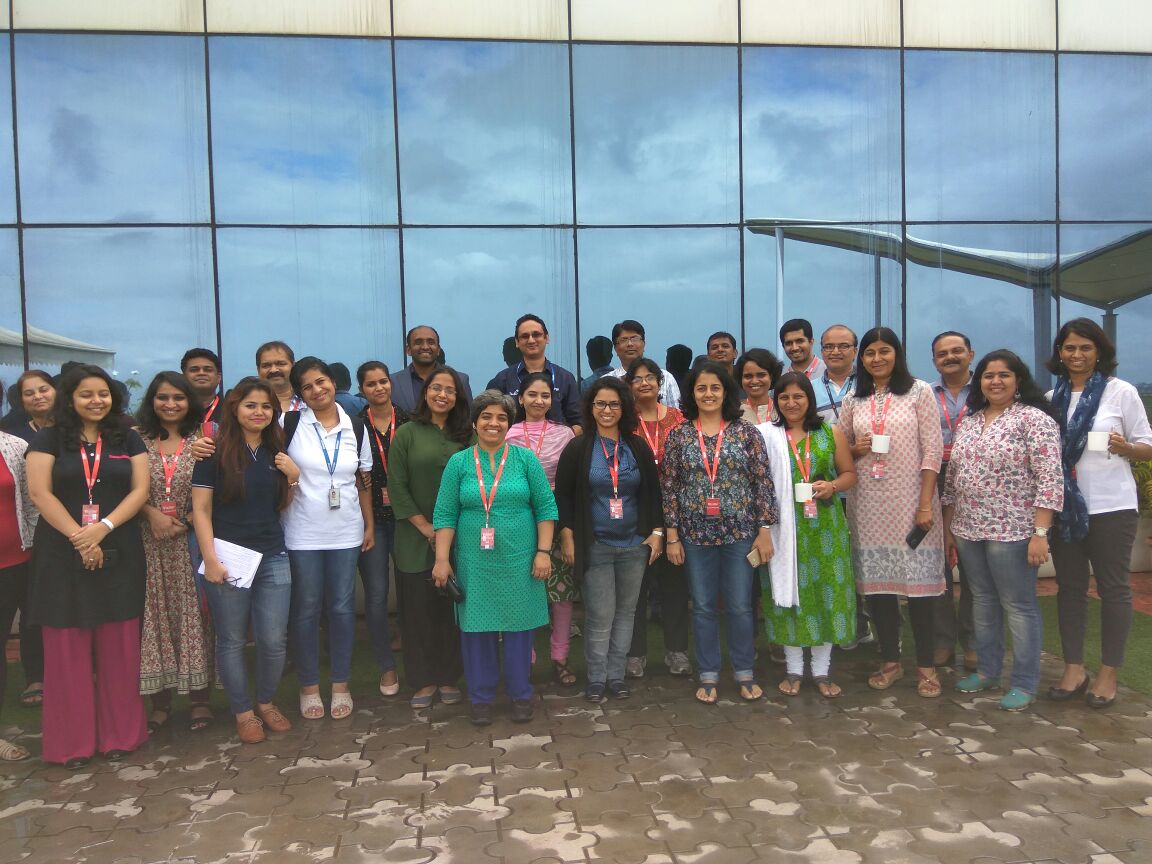By, Anagha Walvekar
This year’s zip conference, which was held on July 29, 2017, was a great learning experience. The awesome venue was sponsored by Schlumberger.
The agenda was four long sessions interspersed with six quick byte sessions. All the sessions were loaded with take-aways. Most of the content was based on the experience of the speakers, thus adding weight to the content.
The day started with a delicious breakfast on the terrace with an enchanting view followed by Ameya Atawane welcoming the attendees and introducing the first speaker of the day – Mugdha Kulkarni. Her topic was “Neuroscience and Writing”. Who would have ever thought that neuroscience would have anything to do with writing! But Mugdha, in her own way, helped us see the link between the two. She showed how it can help us improve our writing by identifying and building a pattern in the content, making the user expect something, and then throwing in a surprise to make an impact on the reader. She also spoke about increasing our circle of activity which in turn helps us increase our circle of influence.
Next was a quick byte session by Vishakha Rao on the WalkMe tool. She told us about the tool and that it can be installed on top of an application. It is used to create guided walk-through to help the user perform complex steps. The tool also helps you set-up analytics, add sample videos in the walk-through, and do a lot more.
The tea-break was followed by a well drafted introductory session – “The Next Gen Database – MongoDB” by Abhilasha Garg. MongoDB is the database which is used when there is a large amount of unstructured data. She touched on the need of a database, such as MongoDB, where it is used, its data types, its limitations, and demonstrated a few of the basic functions used in MongoDB.
The next session by Piyush Shrivastava, “Writing your user’s story: A narrative in three acts”, was about finding similarities between writing a script for a play or a movie and technical writing. To make his point, he gave us a simple exercise on writing about a movie of our choice in three paragraphs. He compared the three acts – setup, confrontation, and resolution – normally used in script writing and discussed scenarios where these acts could be implemented in technical writing.
After a scrumptious lunch, we had a quick photo session to capture the enthusiasm of the participants and the attendees.
Lunch was followed by a session on “Rest API Documentation Kick Start” by Gyaneshwar Talwar. He explained in very simple words what is a REST API and demonstrated a few APIs used for tasks, such as finding locations and analyzing tweets on a subject on Twitter. He briefly spoke about how one should go about documenting the REST APIs. He ended his session with a promise to conduct a workshop on Swagger.
Shobhashri Raghavan and Tapan Kumar presented an interesting quick byte session on 3D Animations in PDF. They shared with us how they insert a 3D animation in PDF files. They use PTC Creo to create a 3D model and then use SAP – Visual Edit Model tool to create a 3D animation of the procedure to be followed to perform a complex task. This animation file is then embedded in a PDF file. This is a good option where a complex procedure can be explained by showing a video.
Sangeeta Raghu Punnadi presented a quick byte session where she demonstrated how she used animated GIFs to enliven her documentation. She told us about the free tools (Screentogif and LiceCAP ) and the licensed tools (Camtasia, SnagIt13, and Photoshop) that are available. She also gave some handy tips when creating animated GIFs and answered a lot of queries the attendees had on animated GIFs.
Anagha Walvekar narrated her first experience with Git, Markdown, and Jekyll – the software that are gaining popularity among product-based companies. After a brief overview of the tools, she recounted the challenges she faced and how she resolved them when working on the documentation for a cloud-based product. She also listed the plus points and pain points she experienced when working on that project.
In his session “Where is writing”, Rohit Kanwar nailed it when he stated that no matter what tools or technology the writers use to create content, at the end of the day, what matters is whether the content created for users was useful. He made his point by giving an example of how the famous movie characters, such as Gabbar Singh from “Sholay” or the Joker from “Batman”, created by the script writers are still remembered by the characters they played rather than their names.
The day ended on a thought-provoking note when Paresh Naik, in his session – “What made you a writer won’t make you a leader” asked the audience to listen to two music videos and ponder over the title of his talk. He asked the audience to write comments on the STC’s LinkedIn and Facebook pages, where he would add an article by the same name.
A small contest was also declared – based on the sessions conducted, two questions were asked and the winners were gifted with a keychain each!
Mugdha Achalkar concluded the day with the vote of thanks. An announcement regarding the forthcoming annual conference was made and those interested in presenting were urged to send proposals for the same.
About the author
Anagha has over 14 years of experience as a trainer. She has also authored courseware for C and C++ programming languages. She has done English language reviews for “Employability Enhancement” (E2 series), a series of books published by Avani Publications, Pune. Currently, she is working as an Associate Technical Writer with TIBCO.


Recent Comments